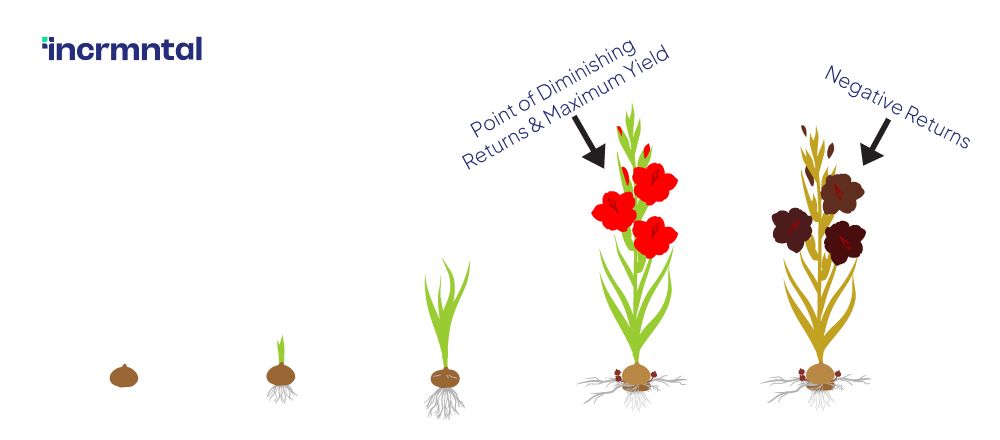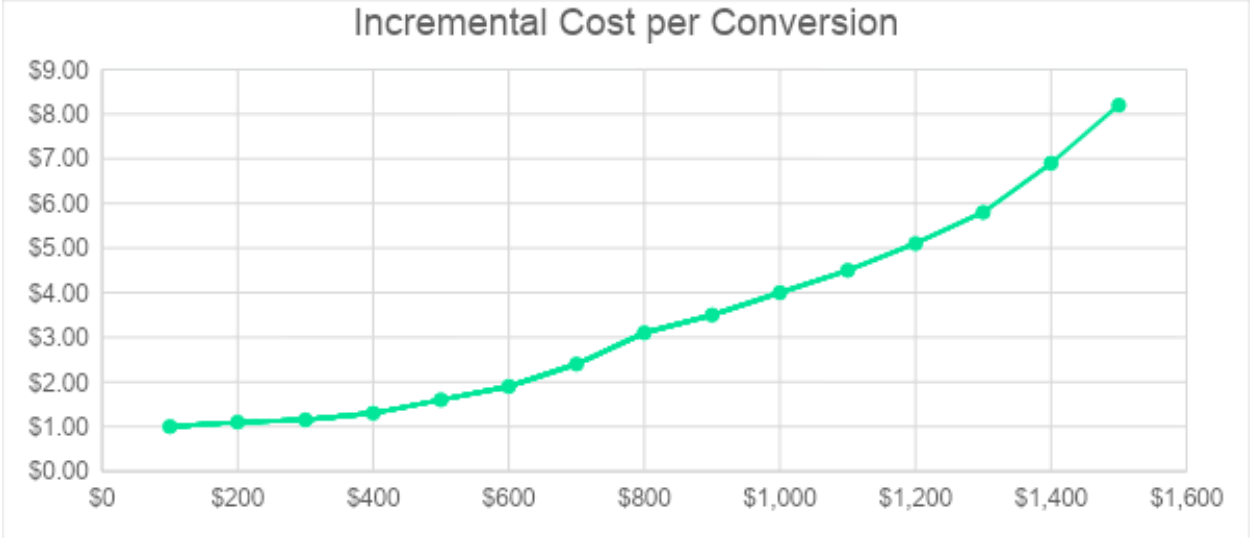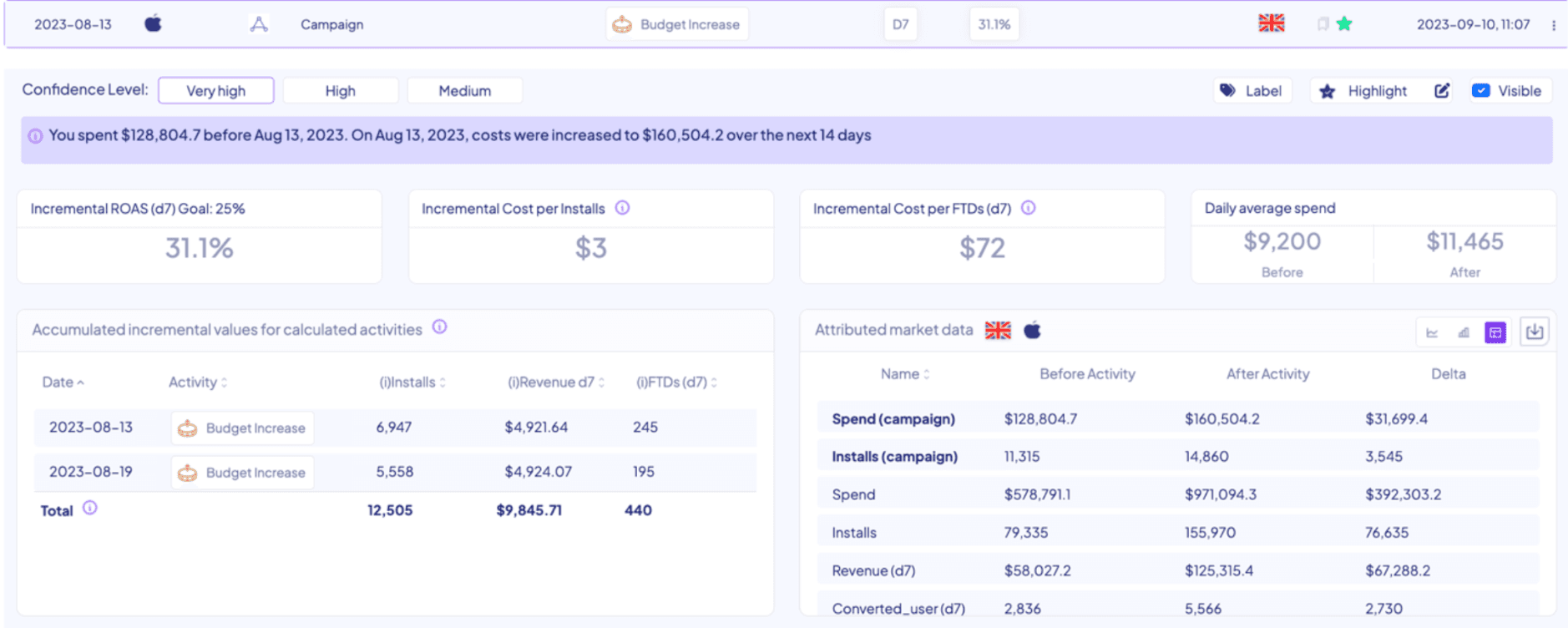Platform
Use Cases
Many Possibilities. One Platform.
AI and Automation
The Always-on Incrementality Platform
Solutions
Teams
Built for your whole team.
Industries
Trusted by all verticals.
Mediums
Measure any type of ad spend
Use Cases
Many Possibilities. One Platform.
AI and Automation
The Always-on Incrementality Platform
Teams
Built for your whole team.
Industries
Trusted by all verticals.
Mediums
Measure any type of ad spend

In the world of advertising, there are two important fundamental concepts that shape ad spend success and marketing performance: The Point of Diminishing Returns and the Point of Maximum Yield, alongside the darker side (or the pitfall) called Negative Returns.
To explain these concepts, we’ll start off with an analogy, explaining these concepts using cute and colorful flowers.
If you ever bought a flower pot, those usually come with a small note explaining how to care for your new flower. How to check the soil’s moisture, how much sunlight the pot should get, and how frequently you should water the pot for the flower to grow.
Following instructions, you’ll make sure that your pot is well positioned, you’ll plant the seeds, you’ll watered the soil as per the tiny note, and before you know it – a sprout will appear.
You’ll keep on going, often even singing to the pot (it can’t hurt…can it?), making sure that the soil is moist, and a couple of days later – you’ll start seeing a fully-fledged flower blooming.
A fully bloomed flower, is the point of Diminishing Returns and Maximum Yield.
But you want more flowers. Your CFO is pressing, your company is depending on you: “More Flower!” they say. You know that your flower is the best flower it can be, but you’re also thinking about scale.
Now you continue watering the flower. Maybe if you’ll add significantly more water, the flower will grow even bigger!
And before you know it – you’ve killed the flower.
You’ve reached Negative Returns.

In the realm of advertising, the point of diminishing returns and maximum yield represent the most you can spend with a channel before additional ad spend starts chipping away into the efficiency of ad spend.
If you overspend across a channel, you’ll quickly start reaching negative returns.
What most marketers want to do is find the “sweet spot”. That’s the spot of maximum yield, where you’re maximizing the spend level, while enjoying the most efficient results.
Underspending equals an opportunity cost, but overspending can mean a negative return.
In the world of advertising, understanding the concepts of the Point of Diminishing Returns, the Point of Maximum Yield, and the dangers of Negative Returns is paramount. Balancing your advertising budget and strategy is crucial to avoid wasting resources beyond the Point of Diminishing Returns while aiming for the Point of Maximum Yield. Finding this equilibrium ensures a successful campaign that garners optimal results without succumbing to the adverse effects of Negative Returns, much like a seasoned gardener achieving a bountiful harvest while avoiding overwatering that might harm the plants.
A method to understand the point of diminishing returns and maximum yield, or understand if your ad spend has reached the point of negative returns is by understanding the current marginal cost per conversion at different spend levels.
Let’s look at a simple exercise of a mobile app, who’s target cost per conversion stands at $4.00
In this example, the ad spend divided by the number of conversions shows a nice average cost per conversion of $3.30 , making the channel seem efficient and profitable, with the potential of scaling up the ad spend even further.

But when looking at the Marginal Cost per Conversion at different spend levels, we can see a different story:

Here, we see that the spend at lower level is driving low cost per conversion results, however, scaling the spend up, goes passed the point of diminishing returns, making the cost per conversion increase drastically to the point of negative returns.
Continuing to scale this channel would very quickly turn a once “successful channel” to an extremely unprofitable one.
Measuring the marginal results is only possible when measuring incrementality using a causality approach. While legacy incrementality measurement methods relied on A/B testing audiences, or conducting GeoLift Experiments, Incrementality measurement today can measure the true incremental value of marketing activities.
Those are the questions asked and answered daily by incrementality, specifically by the methodologies applied at platforms such as INCRMNTAL.

(image: INCRMNTAL ; measurement result for a budget increase, showing a cost per conversion of $3.00)
INCRMNTAL’s platform is capable of measuring the incremental value of any marketing activity: a budget increase, a bid increase, for a campaign or even a whole channel. What the platform does is create a counterfactual prediction for “what would have happened to your conversions if it wasn’t for this specific activity you wanted to measure, given your performance seasonality, and given any other change you’ve done in marketing around the time period of the measurement”. If you want to learn more about our measurement methodology, you should check out the following article.
Our platform is used by a lot of helping them make the right decisions for a successful strategy in the complex advertising world with smart dashboards and actionable insights.
Understanding the marginal cost per conversion helps marketers know where they stand, and which of their channels should be scaled up, and which have reached the point of diminishing returns.

Maor is the CEO & Co-Founder at INCRMNTAL. With over 20 years of experience in the adtech and marketing technology space, Maor is well known as a thought leader in the areas of marketing measurement. Previously acting as Managing Director International at inneractive (acquired by Fyber), and as CEO at Applift (acquired by MGI/Verve Group)